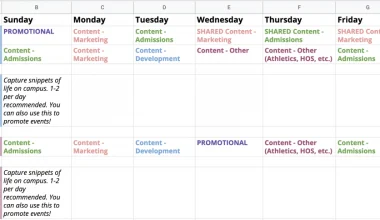Drip marketing can help you reach the appropriate individuals at the right time, which is the main objective of email marketing. You may persuade your target audience to do a variety of things by creating the ideal series of emails, including signing up for your newsletter, recommending a friend, participating in a survey, and buying anything. This post entails details for drip campaign marketing strategy, software, and for E-mail messages.
Drip Marketing
An automated E-mail drip campaign marketing is a planned series of messages that is frequently started by specific consumer actions or behaviors. You have the chance to engage your customers effectively and appropriately with drip marketing. The term “drip” refers to a chef adding the exact amount of an ingredient at the proper time, like as a dash of jus across a plate — neither more nor less than what is required at that particular time. Likewise for marketers. The goal is to deliver pertinent and helpful information just when it is required, without overburdening or “spamming” the user.
Importance of Drip Marketing Campaign
To start an E-mail drip campaign marketing, below are some important attached to it:
#1. Aggregate Results.
When you first get in touch with people, the majority aren’t prepared to buy. You may effortlessly guide prospects through the whole customer journey—from awareness to conversion—with a drip campaign.
#2. Contact Customers Who Were on the Verge of Making a Purchase.
You can reach out to customers and remind them that the things they almost purchased are still available by tracking abandoned shopping carts.
#3. Encourage, Connect, and Keep Consumers.
There is, regrettably, no assurance that you will retain your current clientele. To maintain their interest in your company, it’s a good idea to use drip campaigns, starting with the welcome message and continuing through the onboarding process and post-purchase. It is much more probable that you will keep consumers if you send out regular emails filled with useful advice, suggestions, and deals.
#4. Identify Yourself.
A drip campaign can be a fantastic way to introduce yourself to potential clients or update current clients on new goods and services. Drip campaigns may be engaging teaching tools that pique the interest of your audience and encourage them to learn more about your products.
How and When to Employ Drip Campaign Marketing Strategy.
The main goal of drip E-mail campaign marketing is to keep your brand in contact with your target market. In most cases, the client or potential consumer doing an activity related to your brand will start the sequence of automated emails. The purpose of drip E-mail marketing is to utilize that action as a starting point for dialogue and to establish a rapport with that person by sending them frequently, tailored emails.
Drip Marketing Campaign Strategy
A well-planned drip strategy marketing campaign program can work wonders for your business. The following guidelines should be kept in mind when developing a drip marketing strategy.
#1. Clarify Your Objective.
Without a clear understanding of the goals you want to achieve, it is impossible to create an efficient drip campaign. To set reasonable goals, adhere to the procedures below.
- Establish your goal. What do you hope your drip campaign will accomplish? In general, rather than with precise figures, are we talking about more subscribers, greater conversions, or higher engagement?
- Recognize the metrics. The open rate, click-through rate, conversion rate, and unsubscribe rate are the four primary measures of email marketing. Choose the metric that best aligns with your objectives.
- Recognize your location. Check your email marketing software’s chosen analytics to discover where you stand right now. How effective were the most recent email marketing campaigns?
- Establish attainable objectives. With your current data in hand, you can now create reasonable objectives for your new drip campaign. Initialize them with moderate goals, then frequently reevaluate them.
#2. Employ a Platform for Marketing Automation.
Using marketing automation software to run a drip campaign is one of the most efficient strategy. Your marketing and sales operations can be made more efficient with the aid of marketing automation software. You may find it simpler to:
- Produce more leads
- Make more sales
- Meet your objectives
You won’t have any trouble segmenting your client base, sending emails based on triggers, perfecting your campaigns, and—most importantly—increasing the ROI of your marketing efforts if you use top-notch marketing automation software.
#3. Don’t Just Make a Pitch, Provide More.
Keep in mind that the purpose of a drip marketing strategy is to gradually persuade your clients to perform particular activities. Drip campaigns focus on achieving objectives over time rather than all at once. As a result, your emails should contain more than just sales messages. Make sure they contain helpful information that can benefit your clients, and establish your position as a thought leader by offering engaging content that resonates with them.
#4. Use Market Segmentation Techniques.
By segmenting the market, you can group your clients according to their interests. It can assist you in developing tailored campaigns that cater to the unique requirements and driving forces of your target audience. By using demographics like age, gender, geography, and occupation, you may divide your market. may choose your clients based on certain traits, like:
- Buying anything
- Setting up a website account
- Enrolling in a free consultation
- Segmentation is simple with marketing automation software.
#5. Identify Helpful Triggers.
Triggers are necessary for drip programs to succeed. Customers must complete certain steps known as triggers in order to get emails. You might send emails to a customer who signs up to learn more about one of your services, for example, to keep their interest. Also, you might want to send emails to customers who add items to their shopping carts but then remove them to entice them to finish the transaction. Special offers like free shipping or 5% off if they place their order by a certain date can be included in your emails. To further spark the customer’s interest, messages may also highlight related products.
#6. Add Encouraging Emails.
Keep things light and upbeat since you want your customers to feel good every time they open one of your emails. Add material that will make them grin and make them eager to hear from you again. Ways to create positive emails:
- Highlight the positive. That should go without saying, but emphasize the positive rather than the negative. Be upbeat rather than negative.
- Be amusing. Use witty language in your email copy and make references to things to which readers can identify, preferably with a knowing nod, if your tone of voice permits.
- Write clearly. Create copy that is straightforward to understand by using short sentences and simple vocabulary. Don’t make reading a chore.
- Praise the advantages. Convert the attributes of a dry product into practical advantages. Demonstrate how your items can facilitate life.
- Tell uplifting tales. Do you know a coworker who has demonstrated admirable character? Send emails that detail their experience.
Never let people feel guilty about leaving a shopping cart unattended, unsubscribing from your blog, or choosing not to make a purchase.
#7. Establish the Frequency.
Consider how frequently you want to send emails. There is no set frequency that must be followed, but you should think about your objectives and target audience. Something to think about
- Don’t go overboard. Consumers desire timely and pertinent information, not constant spam. It’s better to send too few emails than too many.
- Think about the viewers. Are you doing business-to-business or business-to-consumer marketing? Think about how busy they are and how full their inboxes are.
- Join them on their journey. Each email ought to have a distinct aim. To determine whether an email is necessary, consider the touchpoints in the client journey.
- Give them the reins. Create an email preference center so that your subscribers may choose how frequently they want to hear from you by email.
- Study your peers’ work. According to HubSpot, one in three marketers sends their readers three to five emails each week.
- Adopt a global perspective. Email cadence counts emails but also analyzes how they are distributed among various email formats. Consider this when planning.
Do some testing to find the sweet spot for customer involvement if you’re unclear about the frequency.
#8. Put Your Sequence in Place.
Your email campaign’s sequencing should be in line with your goals. Your consumers’ tolerance and interest are the only constraints on how many emails you should send.
Something to think about:
- How much information is required by the customer?
- Where are they in the client journey?
- What could they possibly do next with you?
- What difficulties and obstacles exist?
- What can you do to assist them to get past that?
- What is your main objective?
The secret is to send as many emails as necessary to reach your contacts with your message without wearing them out.
#9. Write Intriguing Subject Lines.
Your customers will be less inclined to open your emails if the subject lines are weak. Keep your email subject lines succinct, attention-grabbing, and individualized to ensure that they get read. Consider your audience as a whole, and consider what might catch their interest.
How to write effective topic lines:
- One message only. Make it plain to the person what it is you want them to do or what you are offering them.
- Copy that is front-loaded. To make it easier to scan your inbox, use the most crucial words at the front of your sentence.
- Take action. Write with active verbs that motivate readers to take action. Obtain, Purchase, Own, and Enjoy are all wise choices.
- Be succinct. Like a newspaper headline, email subject lines should be concise and precisely worded.
- Lead with the advantages. What is the email’s key USP? In What ways will it improve their lives? Put that in the foreground.
- Be unusual. Another choice is to try to draw the reader’s attention with an original headline or joke.
In general, always remember to have something to say and to do so as simply and succinctly as you can.
#10. Look for Ways to Assess Success.
Knowing how you’ll evaluate the performance of your marketing approach is crucial. Using UTM codes, which use Google Analytics to inform you where traffic is coming from and whether a visitor has visited your site before, is one of the most well-liked ways to accomplish this in drip campaigns. UTM codes are appended to URLs.
Drip E-Mail Marketing Software
With the aid of drip email marketing software, you may programmatically send pre-written email sequences based on predetermined criteria, such as a predetermined schedule, user activity, or all at once. It is sometimes referred to as autoresponder software or E-mail marketing automation. Here is a comparison of our top drip E-mail marketing software solutions.
#1. Sendinblue
Sendinblue is a drip E-mail marketing software that streamlines marketing automation for startups and small enterprises. Both simple and straightforward drip campaigns and basic workflows may be built using the UI. You may find many different drip workflow concepts and use cases in the template collection, including abandoned carts, flows, welcome series, upselling and win-back sequences, post-purchase follow-ups, and even drips for client anniversaries.
Drip campaigns from Sendinblue can be used with up to 2,000 contacts, 9,000 emails per month, and unlimited contact storage on the free account. Unlimited paid automation packages start at $65 per month. Sendinblue has all the essential features required for successful drip email marketing, plus many more like:
- Testing A/B for automated processes
- Automatic list segmentation and lead scoring
- Personalized change
- Branching logic, sometimes known as “if/else,”
- Builder of visual workflows
- Multiple-channel drips (SMS, WhatsApp, push)
- Workflows for multichannel automation
- Complete performance evaluations
#2. Customer.io
Customer.io is a customer interaction platform for marketing teams with a flair for technology and is the most expensive drip E-mail marketing software on this list. Technical marketers are empowered by Customer.io with:
- Data integrations that are flexible (RESTful API and third-party integrations)
- Divisional engine
- Attribution of data
- Webhooks
- Visual workflow builder with rules
- Personalized change
- Tools for experimentation
It enables you to develop intricate customer journeys including numerous marketing channels. It is also a very technically flexible solution that lets you adapt the built-in capabilities to your requirements. Customer.io offers 8,000 profiles for $150 per month.
#3. Klaviyo
An E-mail marketing automation software with a user-friendly interface and a comprehensive toolbox is called Klaviyo. The platform offers all the tools necessary to create successful drip campaigns such as:
- Personalization of emails
- Integrated automations
- Predictive modeling
- Email flow A/B testing
- Flowing branches
- Visual builder of flows
It is designed with ecommerce marketers in mind. Additionally, it provides predictive analytics, which examines the purchasing patterns and behavior of your customers to forecast churn rates, customer lifetime value (CLV), and other indicators. The automated flows and drip campaigns offered by Klaviyo are free to use. 500 emails can be sent to 250 contacts each month under the free plan. Premium plans begin at $20 for $5,000 worth of emails distributed to 500 contacts.
#4. Drip
Drip is a drip marketing tool that is primarily used by e-commerce firms, as the name would imply. It is renowned for its level of versatility and range of integrations. Of course, the “Drip” platform includes a complete set of tools for distributing drip email marketing campaigns like:
- Workflows for SMS and email
- Variable segmentation
- Built-in workflows
- Product suggestions
- Personalization on a large scale
- Split tests for workflows
There is no perpetually free plan offered by Drip. You’ll need to sign up for Drip’s sole premium plan, which starts at $39/month, after a 14-day free trial. It covers all features and has a cap of 2,500 contacts.
#5. ConvertKit
ConvertKit is a drip E-mail marketing software service for independent contractors and artists. It’s an easy option for email drip marketing and lead creation. What to anticipate from ConvertKit’s drip marketing is as follows:
- Visual builder of flows
- Fundamental subscriber management
- Customized emails
- Visual templates for automation
ConvertKit is a wonderful place to start if you’re getting into email marketing to interact with your followers or start selling your items. It’s easy to use and won’t distract you with a lot of complicated features. Drip email campaigns are only offered as part of subscription plans, in contrast to ConvertKit’s forever-free plan, which comes with 1,000 subscribers and limitless campaigns. The cost starts at $9 per month for the first 300 subscribers and rises as your mailing list gets bigger.
Why Is It Called Drip Marketing?
According to popular belief, the term “drip marketing” originated from the agricultural/gardening practice of “drip irrigation,” which involves providing plants with little amounts of water over an extended period of time.
Does Drip Marketing Work?
Drip marketing is a great strategy to inform current clients about the goods and services offered by your company.
How Much Does Drip App Cost?
Free trial for 14 days; no credit card needed. Begins at $39 per month for a maximum of 2500 email subscribers. Cost varies depending on the size of the list; for prices on 2500+ subscribers.
What Is a Drip Strategy?
Many direct marketers use the drip marketing method, which involves sending customers a steady stream of promotional materials over time.
How Long Is a Drip Campaign?
Four to eleven emails, spaced four, seven, or fourteen days apart, can make up your drip campaign.
Related Posts
- SMALL BUSINESS EMAIL MARKETING: Meaning, Best Email Marketing Software, and Tip
- Email Marketing Platforms: Overview, Common Features, Comparisons
- DRIP CAMPAIGN: A Guide to Drip Campaign Marketing
- EMAIL CAMPAIGNS: Meaning, Software & Marketing
- Drip Marketing Campaigns: How to create Drip Campaigns






